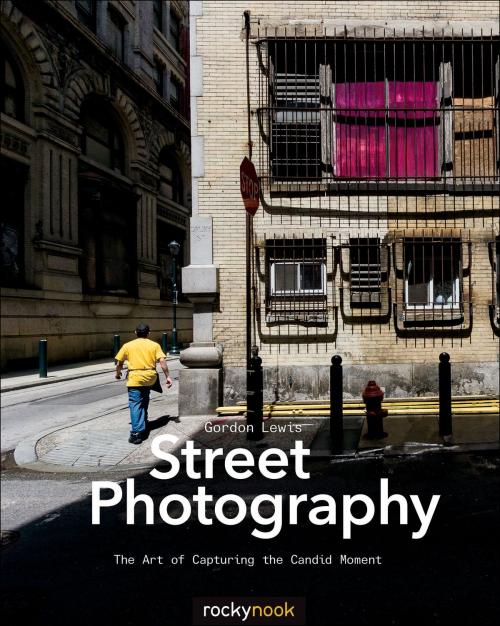Street Photography
The Art of Capturing the Candid Moment
Nonfiction, Art & Architecture, Photography, Pictorials, Photojournalism| Author: | Gordon Lewis | ISBN: | 9781457188992 |
| Publisher: | Rocky Nook | Publication: | March 25, 2015 |
| Imprint: | Rocky Nook | Language: | English |
| Author: | Gordon Lewis |
| ISBN: | 9781457188992 |
| Publisher: | Rocky Nook |
| Publication: | March 25, 2015 |
| Imprint: | Rocky Nook |
| Language: | English |
Since the advent of the camera, there have been photographers whose mission is to record and interpret the public sphere in all its aspects. Eugene Atget documented evidence of everyday life in the streets as well as the buildings and monuments of Paris. Henri Cartier-Bresson pursued what he called "The Decisive Moment," the moment in which the meaning of an event was most clearly captured in a photograph. Their work, and that of many other masters, has inspired generations of photographers to wander public spaces, camera in hand, searching for meaningful moments in time.
Success requires the street photographer to be proficient with their equipment, to be constantly aware of their surroundings, and to have a keen eye. Quick reflexes and self-confidence are essential: Street photographers know from experience that hesitation or procrastination could mean missing a once-in-a-lifetime shot. The adage "it's better to ask for forgiveness than permission" was probably coined by a street photographer.
In Street Photography: The Art of Capturing the Candid Moment, Gordon Lewis helps readers understand and conquer the challenging yet rewarding world of street photography. The book includes discussions of why photographers are drawn to street photography, the different styles of street photography, and what makes a great street photograph. Lewis then goes on to explore how the choice of location can change a photographer's approach to image capture: from city streets to fairs to beaches, Lewis discusses the impact different environments have on the process of street photography.
Another crucial element to becoming a good street photographer is learning to travel light, with minimal equipment. Lewis gives readers practical advice on everything from cameras and lenses to camera bags and clothing. Lewis also delves into the techniques and approaches that will help novices master the art of street photography.
Whether your style is to engage your subjects or to remain unnoticed and take candid portraits, Lewis offers ideas on how to capture fascinating moments in time: a gesture, expression, or composition that may exist for only a fraction of a second, but can leave a lasting impression of the wonders, challenges, and absurdities of modern life.
Since the advent of the camera, there have been photographers whose mission is to record and interpret the public sphere in all its aspects. Eugene Atget documented evidence of everyday life in the streets as well as the buildings and monuments of Paris. Henri Cartier-Bresson pursued what he called "The Decisive Moment," the moment in which the meaning of an event was most clearly captured in a photograph. Their work, and that of many other masters, has inspired generations of photographers to wander public spaces, camera in hand, searching for meaningful moments in time.
Success requires the street photographer to be proficient with their equipment, to be constantly aware of their surroundings, and to have a keen eye. Quick reflexes and self-confidence are essential: Street photographers know from experience that hesitation or procrastination could mean missing a once-in-a-lifetime shot. The adage "it's better to ask for forgiveness than permission" was probably coined by a street photographer.
In Street Photography: The Art of Capturing the Candid Moment, Gordon Lewis helps readers understand and conquer the challenging yet rewarding world of street photography. The book includes discussions of why photographers are drawn to street photography, the different styles of street photography, and what makes a great street photograph. Lewis then goes on to explore how the choice of location can change a photographer's approach to image capture: from city streets to fairs to beaches, Lewis discusses the impact different environments have on the process of street photography.
Another crucial element to becoming a good street photographer is learning to travel light, with minimal equipment. Lewis gives readers practical advice on everything from cameras and lenses to camera bags and clothing. Lewis also delves into the techniques and approaches that will help novices master the art of street photography.
Whether your style is to engage your subjects or to remain unnoticed and take candid portraits, Lewis offers ideas on how to capture fascinating moments in time: a gesture, expression, or composition that may exist for only a fraction of a second, but can leave a lasting impression of the wonders, challenges, and absurdities of modern life.















